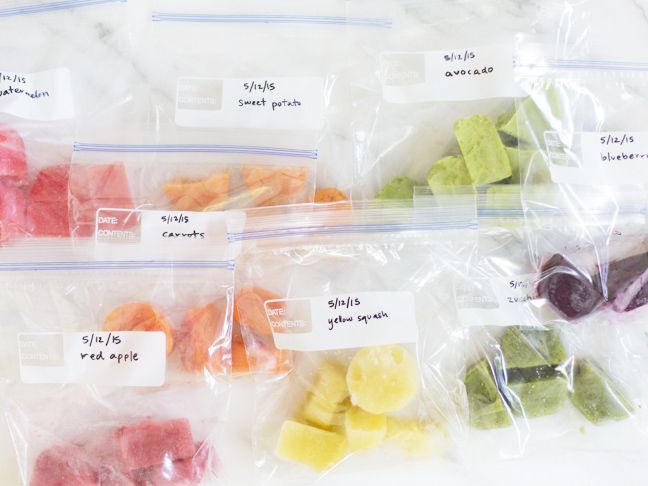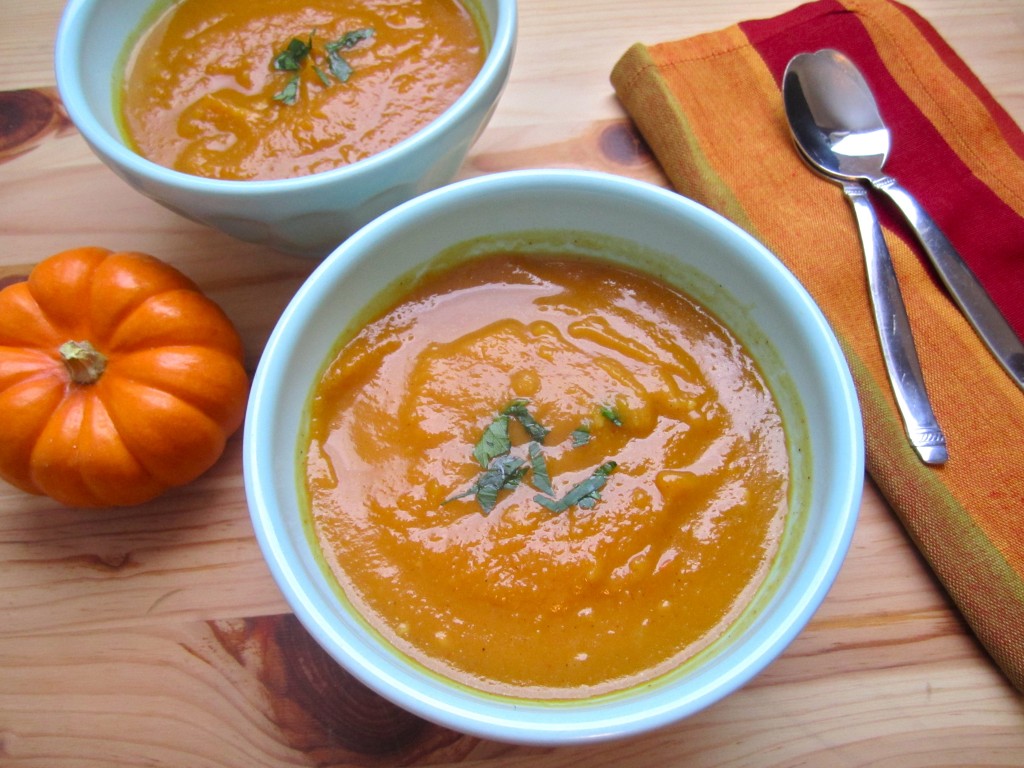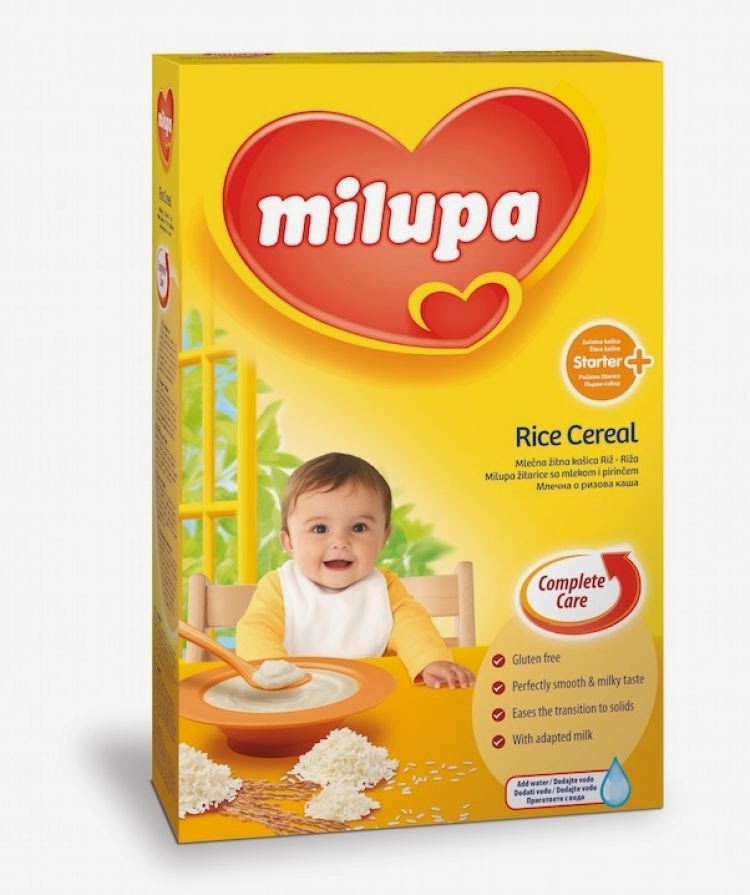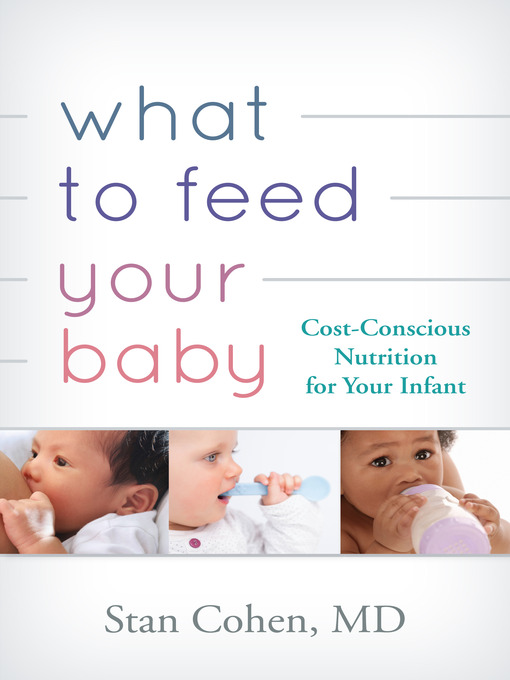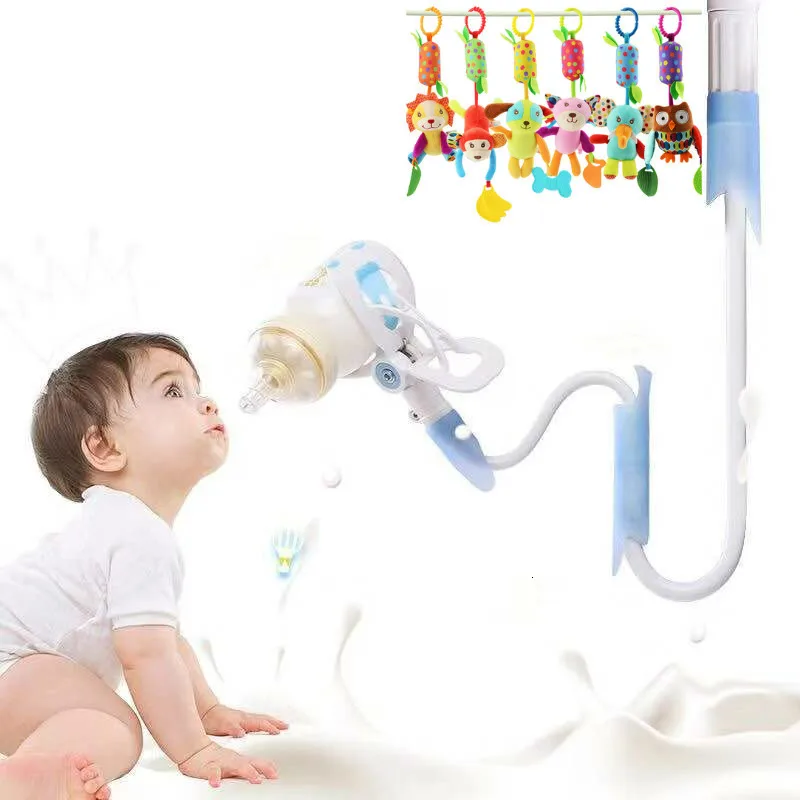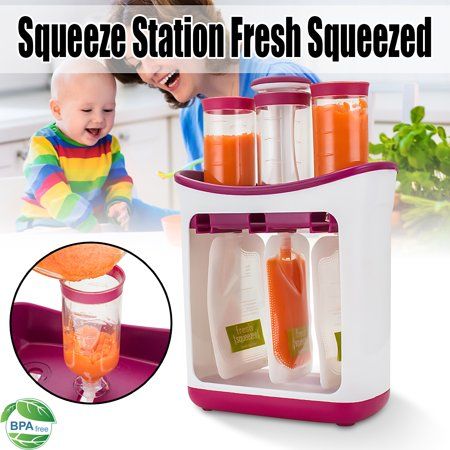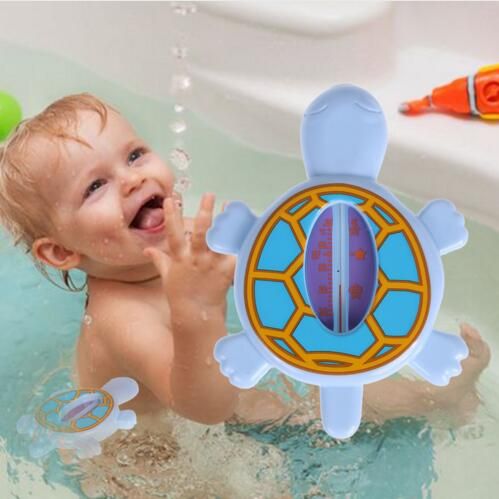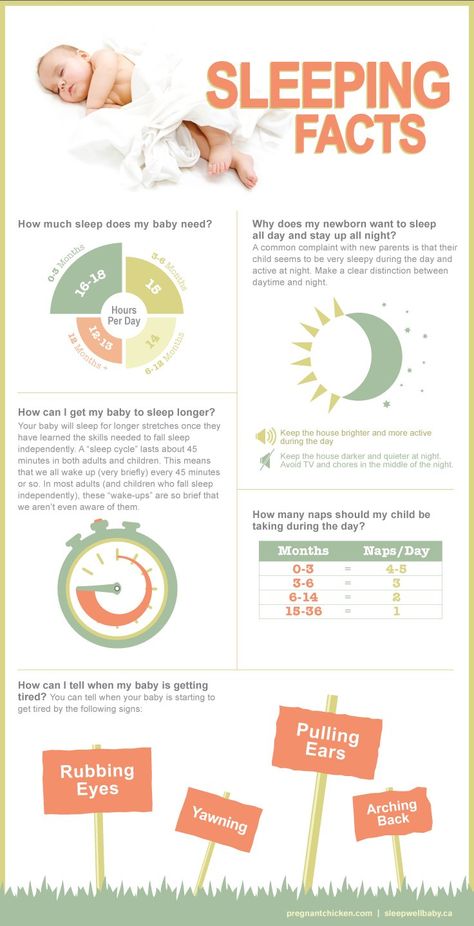How to freeze baby food without ice cube trays
Tips on Freezing and Best Containers
Learn the secrets to storing and freezing homemade baby food for ultimate freshness—AND the best baby food storage containers to use to ensure that you never waste what you make!
Baby Food Storage
Going through the effort to make homemade baby food really only works if you have a good plan for how to store the food to ensure that it stays fresh and that baby has plenty of opportunities to enjoy it. After making a LOT of baby food for my third kiddo to send with him to daycare, I got into a good routine of making and storing baby food—both in the fridge and freezer. Here’s how you can do it too.
TIP: You can find my favorite baby food recipes here.
Homemade Baby Food Storage: In the Fridge
You can store baby food in the fridge in airtight containers for up to 3 days. You can use masking tape and a Sharpie to label the containers with the contents and the date if you have a hard time keeping track of when you made something. (It’s definitely helpful to do that!)
Best Baby Food Storage Containers
I have a four favorite baby food storage containers that I use regularly.
1. Wean Green Baby Food Cubes
These are small, incredibly durable, and made from glass. They’re easy to clean and last forever. (Seriously, I’ve been using the same set for 7 years and they’re still as good as new!) $19.99 for a set of 4
2. Easy Lunchboxes Mini Dippers
These small containers are a perfect size for 1-2 frozen baby food cubes and they’re my go to for packing food for a baby to take to daycare. They also nest nicely when stored in the cabinet. $7.95 for a set of 8
3. Beaba Food Storage Containers
I have two sets of these and I use them regularly for larger amounts of baby food (you could probably fit 4 cubes of frozen food) and for toddler snacks. When assembled, they snap together, so they’re an easy way to stay organized. $14.95 for a set of 6
4. Oxo Tot Baby Food Blocks
This neat system is easy to keep contained in the fridge and is also made from a polypropylene body that is PVC, BPA, and phthalate free. They are dishwasher and microwave safe. $9.99 for a set of 6
They are dishwasher and microwave safe. $9.99 for a set of 6
Homemade Baby Food Storage: For Freezing
Storing homemade baby food in the freezer allows you to make a bigger batch at once, and then serve it to baby over the course of a few weeks or months.The easiest way is to use an ice cube tray, which has the added benefit of portioning out the baby food nicely.
TIP: Any ice cube tray will do. You can use silicone ice cube trays if you prefer a non-plastic option.
Baby Food Storage Without An Ice Cube Tray
If you don’t have an ice cube tray or you’d just rather not use one, you can place a predetermined amount of baby food into a pint-size freezer bag. Remove as much air as possible, press flat, and seal. Place flat in the freezer to freeze. Then you can thaw the entire bag in the fridge overnight, or break off a portion of it to thaw.
How to Store Baby Food in the Freezer Step by Step
- Place baby food into each compartment of the ice cube tray, or fill as many as you need to with the amount of baby food you have.
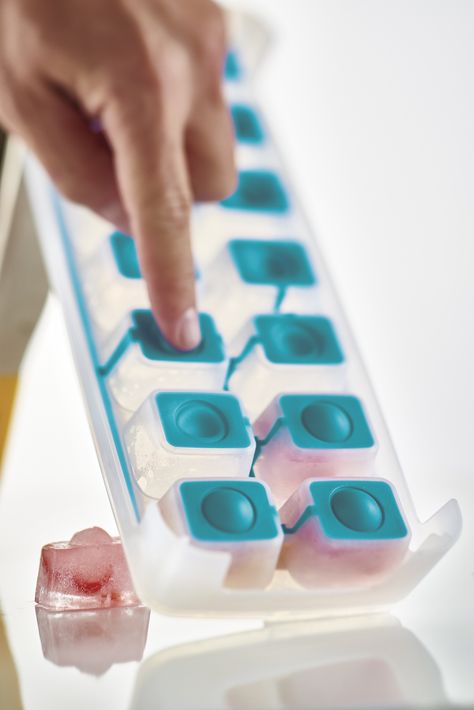
- Cover (if your ice cube tray has a cover) and freezer for 4-6 hours or overnight.
- Pop out frozen cubes and transfer to freezer storage bags. Label as desired with the type of baby food and the date.
- Store in the freezer for up to 3 months.
TIP: I like to have a bag of sweet fruit purees and more savory vegetable purees to avoid having too many separate bags in the freezer at any given time. Then you can combine them into baby food combinations easily!
How to Thaw Baby Food
To thaw baby food, simply remove a cube (or as many as you need) and place into airtight containers. Thaw overnight in the fridge and serve. 1 cube may be plenty for a baby aged 6-7 months and older babies may enjoy two cubes.
Tips for the Best Baby Food Storage
- Keep fresh baby food in an airtight container for up to 3 days in the fridge.
- Use a regular ice cube tray to freeze, a silicone ice cube tray with a lid, or a small freezer bag with the contents pressed flat.
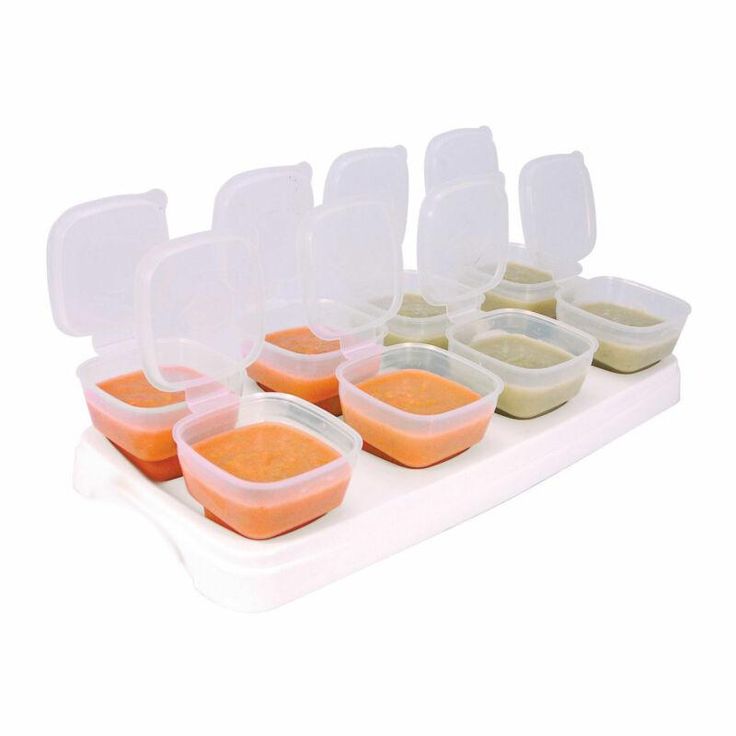
- Store frozen baby food in a freezer storage bag in the freezer for up to 3 months.
- To avoid freezer burn, try to remove as much air as possible from the storage bags.
- Label your bags with the contents and the date.
- To thaw baby food, simply remove a cube (or as many as you need) and place into airtight containers. Thaw overnight in the fridge.
- Use leftover baby food to flavor yogurt, baby oatmeal, baby rice cereal, smoothies, or cottage cheese.
- See some of my favorite Baby Food Pouch recipes here for more ideas on how to serve your baby food!
I’d love to hear your feedback if you have another storage technique or container that you love, so please comment below!
6 Ways to Freeze Homemade Baby Food
**These posts often contain affiliate links. Please see our disclosure policy for details.**
Parents may decide to make homemade baby food for a variety of reasons. For some people, they want to know exactly what they are feeding their baby, so they want to be in control of making the food. They are able to buy organic so they know their babies are getting the best.
They are able to buy organic so they know their babies are getting the best.
For other people, homemade baby food is a cheaper alternative to store-bought varieties.
Whatever the reason for deciding to make homemade baby food, once you’ve bought the food and made the purees, the question remains of how to freeze and store them.
There are 6 common methods available to freeze and store homemade baby food, each with their own pros and cons.
This post contains affiliate links. Please see my disclosure policy for more information.
1. Single Serving Baby Food Containers
One option for freezing homemade baby food is to use individual baby food storage cups.
These small silicone pots have a lid to keep the food fresh, and allow you to put the puree right inside and pop them into the freezer. They are also microwave and dishwasher safe, so you can take one out of the freezer when it’s time to eat and heat it up in the microwave before feeding.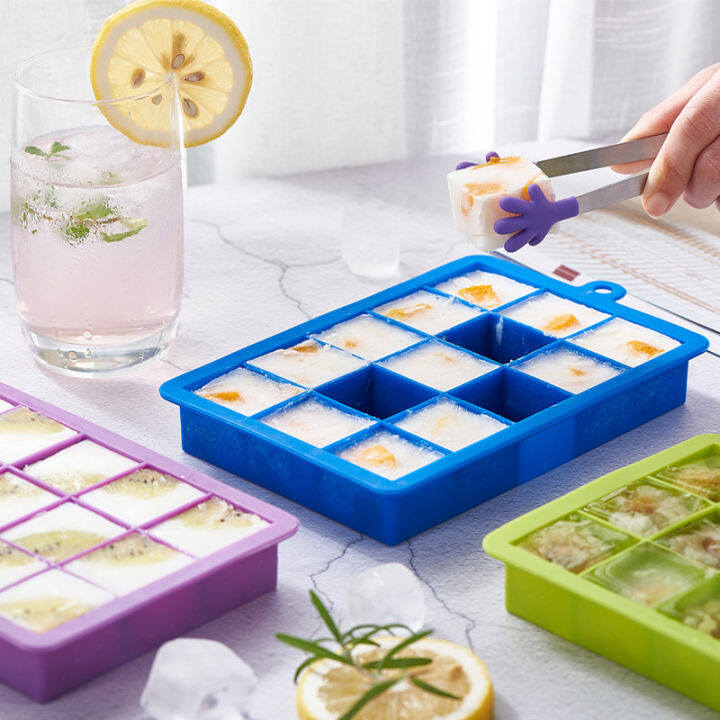
Single Serving Container Pros:
- All in one – no need to freeze and transfer to another container for reheating and eating.
- Ideal for fruit purees like apricots and prunes that don’t freeze completely solid.
Single Serving Container Cons:
- They take up a lot of space in the freezer.
If you do any online research about making and freezing homemade baby food, ice cube trays are likely the most commonly used method.
Purees are divided up into the compartments of standard plastic ice cube trays or flexible silicone trays, and frozen in the freezer. Once the cubes are frozen, they can be popped out of the trays, put into labeled freezer storage bags and kept in the freezer for several months.
When it’s time to eat them, you just remove a cube or two and heat in the microwave on a medium power.
Ice Cube Tray Pros:
- Most people already have ice cube trays on hand.
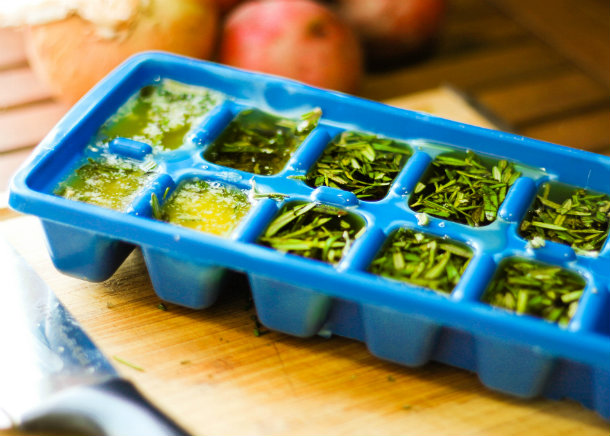
- Many cubes can be stored in one plastic freezer storage bag so they hardly take up any space.
Ice Cube Tray Cons:
- Most ice cube trays make cubes that are 1 oz. For a baby who is eating larger meals, several cubes would be needed per meal.
- This method does not work well for fruits like prunes or apricots that don’t freeze solid. The cubes don’t pop out easily and it is messy.
Similar in look and purpose to ice cube trays, baby food freezer trays are made especially for freezing homemade baby food.
Versions like the Nuby Garden Fresh Freezer Tray have 2 oz compartments, and include a lid for sealing in nutrients when freezing and protecting against freezer burn.
Freezer Tray Pros:
- Compartments are bigger, resulting in 2 oz cubes.
- Include a lid which allows food to be stored in the freezer tray if transferring frozen cubes to a storage bag isn’t desired.
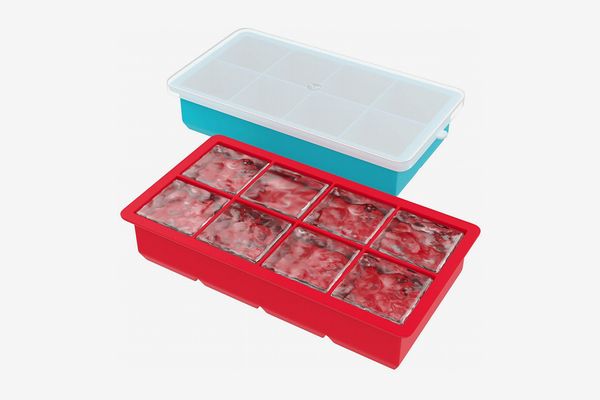
Freezer Tray Con:
- Not ideal for foods that don’t freeze solid.
Another method for freezing homemade baby food purees is in pouches. You’ve probably seen the food pouches with the spout and cap that are so common these days. These are homemade versions of those.
There are single use pouches as well as reusable pouches that allow you to put your own homemade purees inside. The pouches can be frozen and thawed for convenient eating both at home and on the go.
Food Pouch Pros:
- Convenient method for feeding your baby purees on the go. Can be used with a spoon attachment for young babies or eaten right from the pouch for older kids.
- Filling station helps decrease mess when filling them with purees.
- Reusable pouches save money by allowing you to only buy them once and then reuse them.
Food Pouch Cons:
- Single use pouches get expensive and create a lot of waste.
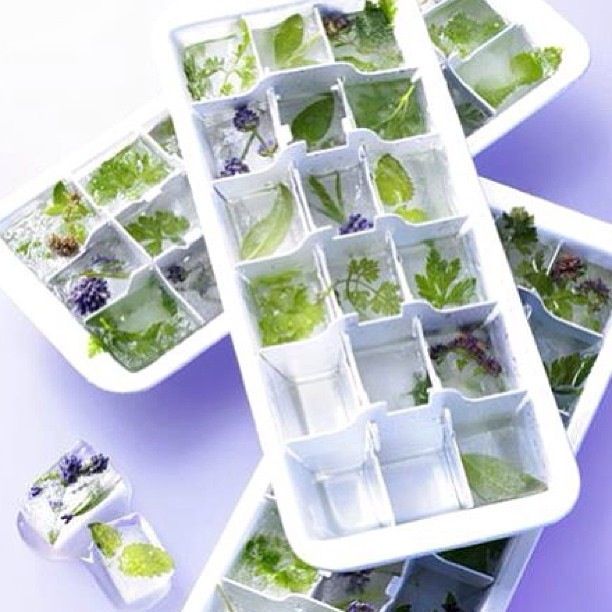
- They can’t be microwaved. Require warm water to thaw.
A simple method for freezing homemade baby food using items you already have at home is the cookie sheet, wax paper and freezer bags method.
Similar to flash freezing any other type of food, scoops of puree are laid out on a wax or parchment paper lined cookie sheet. The cookie sheet is put into the freezer until the food freezes solid. Then, the mounds are popped loose and transferred to a labeled freezer storage bag for long term storage.
Cookie Sheet and Wax Paper Pros:
- Uses common kitchen items and doesn’t require buying anything new
- Allows for easy transfer of frozen food to freezer storage bags.
- Works well for foods that don’t freeze solid like prunes or apricots.
Above photo: Apricot purees that have been frozen on cookie sheets. They aren’t frozen solid but they retain their shape enough to be transferred to a freezer bag and removed one at a time for serving.
Cookie Sheet and Wax Paper Cons:
- Requires enough freezer space for the cookie sheets to fit inside while the purees freeze.
- If the purees are very thin and runny, this method won’t work as well because they will spread out and run over the cookie sheet.
Additional options for freezing and storing baby food are tupperware containers and freezer-safe glass jars.
The key here is making sure the containers you are considering are freezer safe. It also helps if they are microwave safe as well to allow for easy heating and serving.
Be especially careful with glass. Glass jars that are not freezer-safe can break in the freezer when the food expands as it freezes. Some people have experienced shards of glass in their baby food because they used non-freezer-safe glass jars.
However, there are freezer-safe glass jars available which could work, as well as other freezer-safe containers you might already have at home.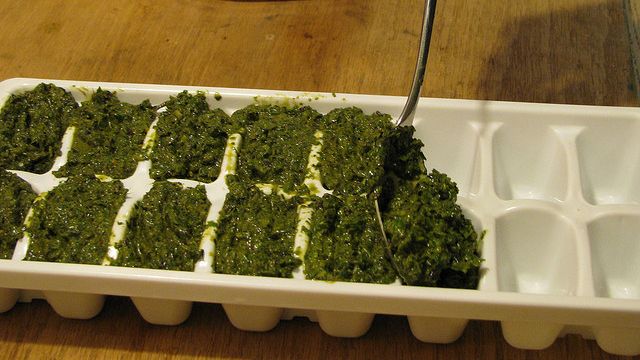
Freezer-Safe Containers Pros:
- Use items you have at home.
- All in one – no need to transfer to a separate container for storage, heating or serving.
Freezer-Safe Containers Cons:
- Take up a lot of room in the freezer.
- Risk of injury if non-freezer-safe containers are used.
- Edited to add: even plastic can shatter if it’s dropped after being pulled from the freezer. I found this out the hard way! The plastic gets frozen and brittle, and the impact from being dropped can make it shatter everywhere.
– – – – –
With the help of kitchen gadgets like a rice cooker for steaming foods and a food processor or blender for making purees, it’s never been easier to make homemade baby food.
Once you’ve made the food, the next step is deciding how you will freeze and store it.
These 6 methods for freezing and storing homemade baby food purees vary in their costs, pros and cons. The choice is yours which method best suits your needs.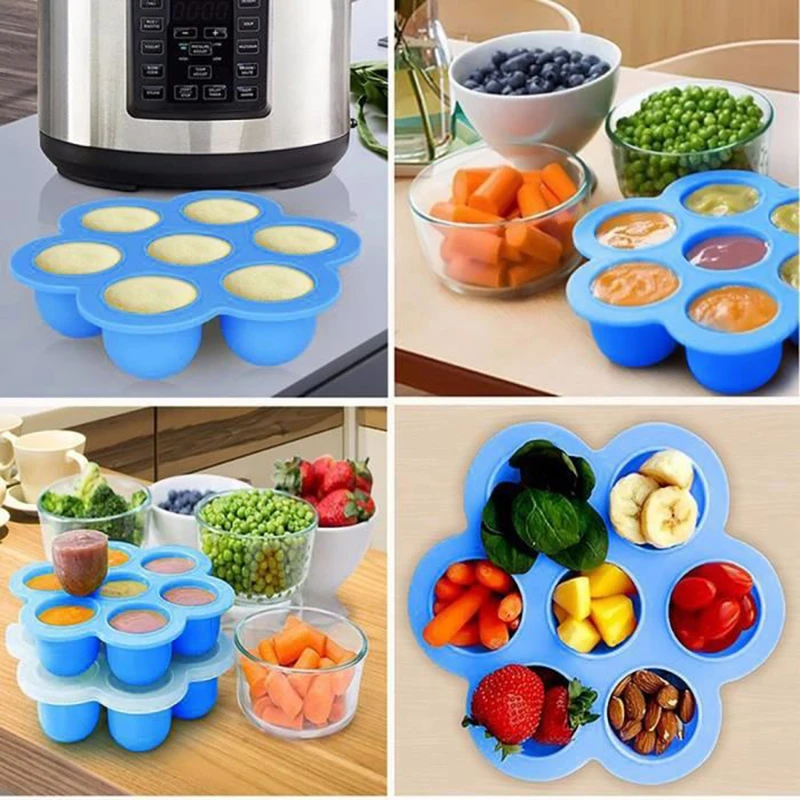
In my homemade baby food journey, I have primarily used the baby food freezer tray and cookie sheet methods. Once the food is frozen, I transfer them to freezer bags labeled with the date and type of food, and store them in the freezer that way.
When it’s meal time, we pull out a food cube and put it in a kiddie bowl. Then we heat it up in the microwave for 1 minute on 60% power. Sometimes we need to add an ice cube to the bowl and swirl it around for a few seconds to cool off foods that heat up quicker. Then, it’s ready to serve!
I generally don’t enjoy cooking much but making homemade baby food is fast, easy and surprisingly fun. There is something intensely satisfying about having a big stockpile of frozen baby food in the freezer!
– If you liked this post, I would love if you would share it on Pinterest or Facebook. Thanks & xo! –
How to freeze baby food - Encyclopedia Baby food
Levchuk Victoria© Knowing how to freeze baby food, you can cook and store whole batches of homemade food for a child, because this is a real find for busy parents.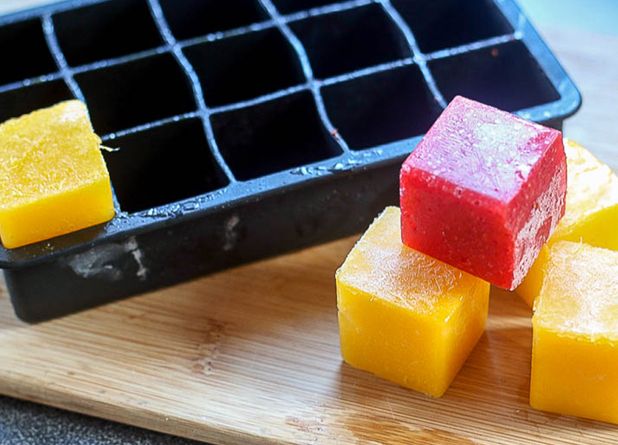
Table of Contents:
There are several ways to freeze baby food - they all work equally well - but may take up varying amounts of freezer space.
All ways …
…you should prepare homemade baby food and then refrigerate it as quickly as possible to prevent bacterial growth. Any food left at room temperature for more than two hours is not safe for a child to consume and should be thrown away.
To cool cooked food quickly, you can try putting it in a shallow container - you can even dip the container in a pot of cold water to help speed up the process.
How to freeze baby food - Method 1
Thoroughly clean the ice mold and the spoon that will be used in filling each section. An ice tin with a resealable lid is ideal as it protects food from frostbite or picking up any odors from the freezer. If there is no mold with a lid, you can cover with food-safe plastic wrap. Some people use foil, although we don't recommend it as some of the foil will remain in the food!
Place the filled ice cube tray in the freezer, and - once completely frozen - place them in ZIP bags that take up less space in the freezer.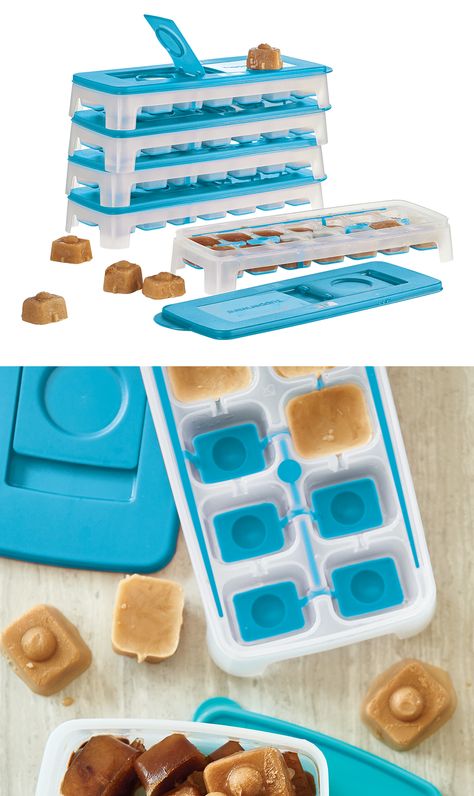
This method produces small portions of baby food that are ideally sized - typically around 30 grams or so. One cube per meal may be enough for a child to start with, but as they grow, you may need to increase the number of cubes at a time or increase the ice cube tray.
You can also make many different flavors of baby food by mixing and matching different fruit and vegetable cubes, for example, the combination of cubed apple puree with cubed carrot puree, delicious!
Which ice mold should I choose?
Some ice cube trays are specifically made for baby food and do not contain potentially harmful chemicals - but you can use a regular ice cube tray, or you might be advised to try a silicone mold, or even stainless steel trays, although the regular plastic version will do. if there is confidence in the quality of the workmanship.
How to freeze baby food - Method 2
Same as method 1, since the process of freezing baby food is the same, only silicone cake molds are used instead of an ice mold! Their flexibility makes it easy to remove food portions - plus, of course, their use is beneficial when the baby starts to eat more baby food!
How to Freeze Baby Food - Method 3
If no suitable freezer containers are available for baby food, baking paper can be used (although a little more freezer space will be needed initially).
Simply spoon the cooked baby puree onto the baking sheet to form small mounds (though note that this will not work if the puree is too thin). We cover the baking paper with cling film, freeze, and then mix the servings of food into bags, as before.
How to Freeze Baby Food - Method 4
Another good way to freeze homemade baby food is to divide the puree into freezer-safe glass jars and place them in the freezer.
However, please note that you should never freeze baby food in glass jars unless the jar manufacturer has specifically stated that freezing is safe and possible.
Jars that are freezer safe must be properly labeled and distinguished from other tins (including commercial baby food tins) that are not strong enough to withstand the expansion of food that occurs during the freezing process.
This means that the jar may burst or, even worse, there may be small microcracks that cannot be seen with the eyes, but which will allow tiny pieces of glass to get into the baby's food.
How to Freeze Baby Food Method 5
Probably the most popular way to freeze homemade baby food is to use freezer trays or jars for baby food, there are so many options to choose from!
Manufacturers, recognizing the growing trend of parents to freeze baby puree, offer special forms of baby food that make life easier, well, because there is a lid! What's more, these molds are free of potentially harmful chemicals, which is something some plastic trays for general consumption are guilty of.
Tracking the finished product
Most types of baby food - especially puree - freeze perfectly. Sometimes you will have to experiment with texture, since the freezing process itself consists in the fact that the water in the product expands when it freezes, destroying the cell walls. This is especially noticeable when the whole food is frozen, for example a frozen banana will be very soft when thawed.
To reduce the hassle of freezing baby food here are some helpful tips.
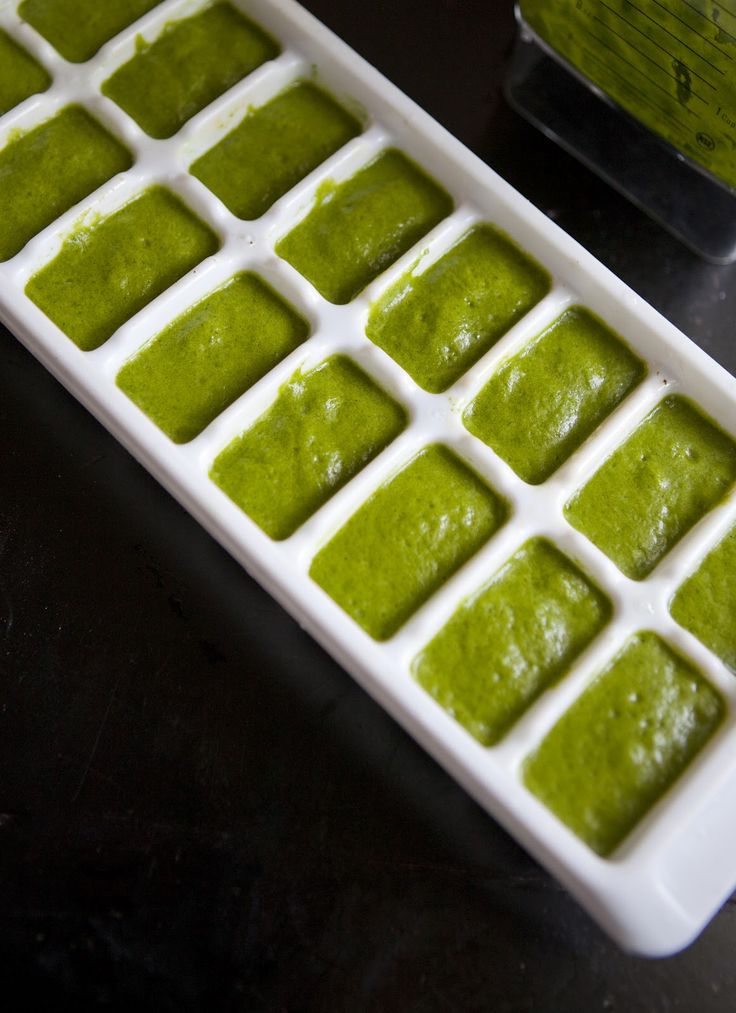 ..
.. - Do not puree too thin before freezing. Keep in mind that many foods become watery when thawed (especially fruits and vegetables), adding extra liquid before freezing will then add too much cereal to thicken!
- Herbs and spices tend to lose their flavor in the freezer. If a baby food recipe calls for them, it is best to add them after after the food is defrosted, just before heating.
- Baked foods - like homemade nuggets or fish fingers - are best frozen when almost cooked but not fully done. This is because the structure of the food when frozen and thawed can behave negatively.
— When freezing yogurt, remember that it may be too thin when defrosted. Sometimes stirring it well is enough to solve this problem - but in some cases, the resulting yogurt is too thin to eat with a spoon, so such yogurt can be used in a smoothie!
- A good result is obtained from freezing rice and oatmeal, which is good if the morning is like a nightmare and there is no time to organize a full breakfast. Only cereals should not be made too thin before they are frozen .
Only cereals should not be made too thin before they are frozen .
- Many fruits - especially apples and pears - can look very brown when frozen and thawed. This discoloration is a natural and harmless result of the fruit being exposed to air, but if it's a concern, mixing lemon juice and fruit puree before freezing can solve the problem. Please note that citrus fruits can cause an allergic reaction in babies, so you can use it with a changed color!
- If you want to make your own stock of vegetable or meat broth, which is convenient, you just need to prepare a large batch at a time and freeze. It's worth trying freezing in ice cube trays or baby food trays, as discussed above - then the ideal size of small portions will be in the freezer to use as needed.
- If baby food has been frostbitten, fortunately food safety is not affected - just thaw and then cut or spoon away the affected areas.
How to defrost baby food
The safest and easiest way to defrost baby food is to put it in the refrigerator overnight before feeding.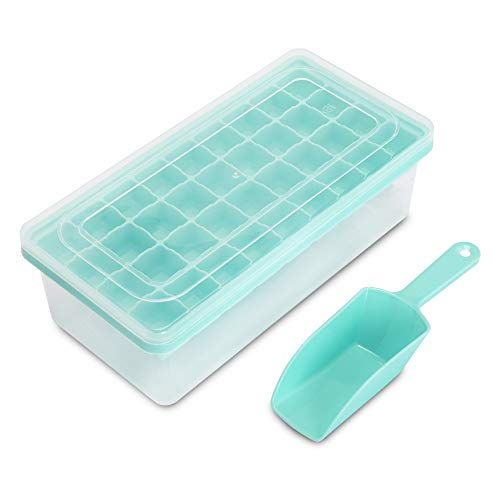 Frozen baby food cubes take 8-12 hours to thaw in most refrigerators. Thawed baby food should be used within 24 hours.
Frozen baby food cubes take 8-12 hours to thaw in most refrigerators. Thawed baby food should be used within 24 hours.
Never, never re-freeze defrosted baby food as this creates a risk of food poisoning for the baby.
Freezing Homemade Baby Food Encyclopedia Baby Food
Viktoria Levchuk©
There are some important guidelines for freezing baby food that you need to follow, they are outlined on this page, and there is even a diagram of the foods that can be frozen. We will show you how to freeze freshly made puree and store it. It will be interesting to read.
Good to know!
- The remains of frozen baby food - what to do with them, we will find out in the article.
- Heading Frozen complementary foods - all about baby food cubes.
- New thinking on allergens
Easy to use sitemap Encyclopedia Baby Food with a list of all articles and recipes.
How long do you keep baby food in the refrigerator or freezer?
Contents:
- Freezer: 4-6 months (ideally used within 1 month or 3 months)
- Refrigerator (fruit/vegetables): 24 hours
- Refrigerator (meat, poultry, fish eggs): 24 hours
For optimal quality and nutrient retention, store frozen baby food cubes in the freezer within no more than 1-3 months.
Frozen baby food is safe to use if kept in the freezer for about 3-6 months without thawing again. However, it is more reasonable to use them in the region of 1 month to 3 months inclusive. Due to the amount of water crystals that accumulate in baby puree, and the fact that nutrients and important substances can be leached/evaporated when thawed due to these same water crystals, it is wiser to use your frozen baby food whenever possible. - no more than 3 months of storage. However, it is best to use within the first month after freezing, we advise.
Most sources advise storing fruit and vegetables for 8 to 12 months in the freezer. This is mostly true of whole foods that are congealed in their natural state. This is also provided that the refrigerator compartment remains at a constant temperature below zero. Deep-freezing is best if you want to keep frozen food for a long time. However, it should be remembered that the instructions and recommendations for freezing food for long-term storage do not imply that the fruit or vegetable has been boiled and mashed.
How long can baby puree be kept in the refrigerator?
In the refrigerator, it is not recommended to store fresh pureed homemade baby food for more than 24 hours. This limitation ensures that the growth of pathogens in the puree is kept to a minimum and that the food does not take on the “refrigerator flavor”. This "rule" applies to vegetables, fruits, meats, etc.
If you do not plan to freeze homemade baby food, then baby food for the baby is prepared every day if he is too small until 8-9months, or every other day, older than the specified age.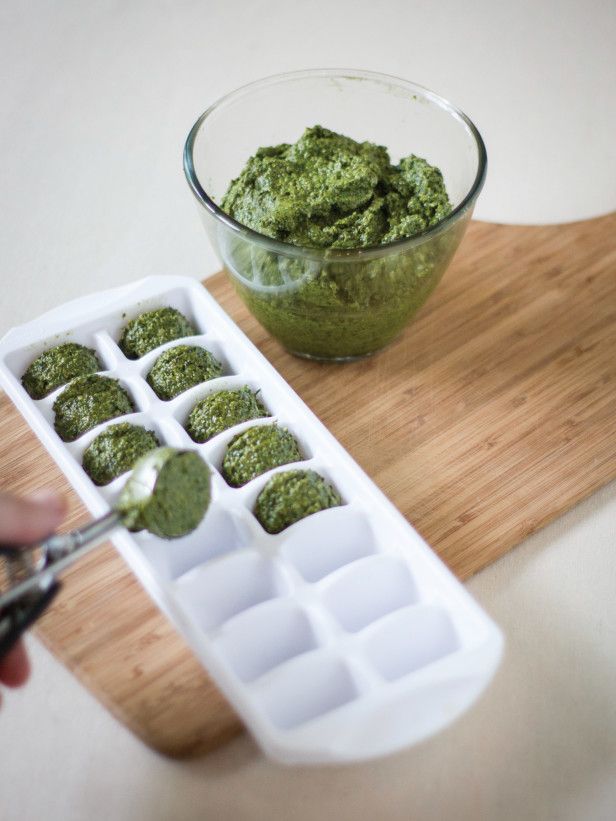
Why freeze baby food?
Save parent time, reduce food waste and ensure food safety.
For example, one potato was baked in the oven, and then half was mashed and the other half was frozen.
Frozen vegetables or fruits are safe in baby food
Fruits and vegetables can be frozen. Using frozen fruits and vegetables is the second best option after eating fresh. The quick freezing process (food is frozen at a very low temperature and very quickly) actually preserves the nutrients optimally. Cooking destroys more important nutrients than freezing food. Contrary to myth, freezing food (particularly fruits and vegetables) does not destroy 100% of minerals and vitamins. The freezing process, subject to storage conditions at a constant temperature of zero degrees, does not contribute to the complete loss of nutrients and important substances - if this is the case, then most of the population is malnourished, since in winter we eat a huge amount of frozen foods.
Frozen vegetables not cooked at the time of packaging must be cooked before eating. Please remember to read the labels of frozen bags, as some brands of frozen vegetables may be pre-cooked.
One of the most frequently asked questions is "Can I use frozen fruits or vegetables for baby food and then freeze the puree?". Since there are no studies that show that repeated freezing is negative and / or can negatively affect health. The problem is that it is necessary to cook food from products that have been frozen once. But the reality is that a frozen product, going through all the stages from a fresh look to a frozen product in a refrigerator in a store, can survive several defrosting and freezing, as it was written earlier, it is through water crystals that nutrients leave. Therefore, purchased frozen vegetables and fruits must be carefully selected, and we would not recommend preparing baby food from them for subsequent freezing of baby puree. It is clear that sometimes parents have no choice and have to start complementary foods with purchased frozen food, so we carefully choose the packaging and the manufacturer, without holes, without pieces of ice.
For example, from frozen vegetables (home-made or a good quality store-bought bag) that were raw when frozen, we cook a roast, we freeze the leftovers of the roast and use it for its intended purpose next time, but it is not worth freezing the roast after the last defrosting.
Why not re-freeze
Do not re-freeze thawed food, this is a correct statement. Re-freezing a defrosted product can affect the quality and taste (and possibly nutritional value) of the product, and when it is thawed, pathogenic bacteria may begin to multiply. It is always necessary to prepare defrosted food before re-freezing. The preparation of a thawed product then allows it to be re-frozen in a single cycle. Storing a bag of frozen fruits or vegetables makes food preparation a quick and easy solution. You do not need to defrost the whole package, just get the required amount of the product, and leave the rest in the freezer.
The easiest way to freeze baby puree is to spoon it into an ice mold, cover with plastic wrap so that there is no air access.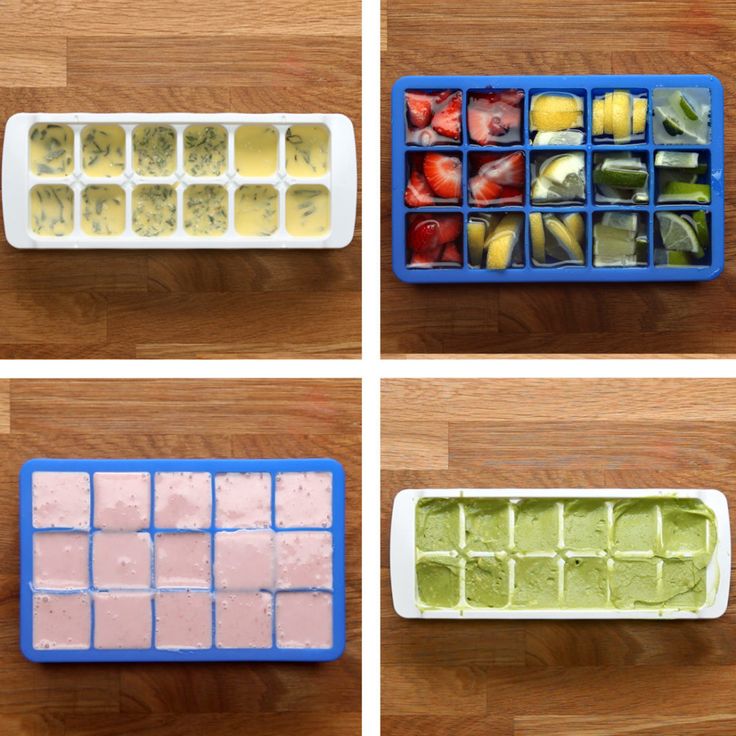
Before using the ice molds, they must be thoroughly cleaned with soap and boiled water. Some parents even immerse their ice molds in boiling water for sanitization (Note: Make sure the sanitization is suitable for the molds before use.)
There are many benefits to storing your child's homemade food in an ice mold:
- Each cube is approximately the same size, which allows parents to determine the amount of food a child consumes.
- Minimal waste by using only 1 cube at a time and not having to waste a lot of food.
- Another advantage is that the ice molds are close at hand and you don't have to go out and buy them.
- The time spent in the kitchen is significantly reduced.
You can transfer baby puree cubes to freezer bags, freeing up molds for the next batch of food and also freeing up some freezer space.
Do not forget about the labeling of packages with cubes of baby puree, write the date of freezing and the type of puree. This will help you quickly remove the cube from the package, as well as monitor their expiration date.
This will help you quickly remove the cube from the package, as well as monitor their expiration date.
Ice crystals on baby food cubes
Don't worry if ice crystals are visible on baby food cubes. It's not frostbite, but excess liquid used in mashing that rises and solidifies at the top of the cubes. These crystals or frost are not dangerous and will not make baby puree cubes inedible or harmful.
Frostbite - what is it and how to determine?
Frostbite looks like greyish brown spots on frozen food. It looks like a leathery type of texture and is easily noticeable. Crystals on frozen foods are not frostbite, but are the result of excess liquid during the freezing process and the formation of ice crystals.
Frostbite does not make frozen foods bad or harmful; it just makes the affected areas very dry. The only thing that can suffer in food that is frostbitten is the quality. You can cut off frostbitten areas and use the undamaged area of food. Frostbite is the result of excess air in a frozen bag that sinks onto food. Eliminate air pockets in bags to help stop frostbite.
Frostbite is the result of excess air in a frozen bag that sinks onto food. Eliminate air pockets in bags to help stop frostbite.
Can glass baby food jars or baby food jars such as Frutonyanya or Gerber be used? and also such banks are prone to rupture. Baby food jars are not manufactured for freezing or extreme heating. There are glass jars for freezing food in them, but they can be hard to find. Many people freeze in baby food jars, but I'm not a fan of this at all. After all, food is made for the baby because we want to give him the best healthy food; Do you really want to take the risk and freeze baby food in glass jars?
There are certain plastic jars that are specially made to withstand high temperatures and/or freezing. Therefore, it is best to use plastic containers or ordinary thick plastic bags, convenient and simple. There are also special freezer bags with a zip clip - an interesting option.
Can previously frozen breast milk or formula be used to make vegetable or fruit purees?
Do not use previously frozen breast milk to prepare puree to freeze later this baby food.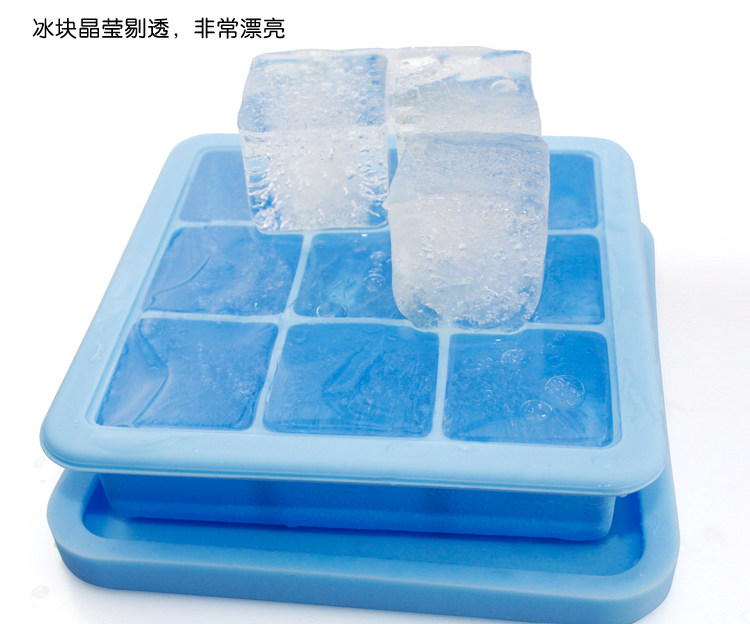
Breast milk must never be re-frozen in any shape or form.
Milk formula
You can freeze puree to which defrosted milk formula has been added. However, formula should not be frozen in bottles or cans. It is impossible to add the mixture to the previously frozen mixture and freeze it. If frozen milk formula is used for mashing, then it is necessary to freeze it at a time without defrosting. Freezing milk formula causes separation of fats and liquids, and the texture suffers accordingly. Although there is no health risk, the same happens with breast milk and cow's milk, the texture and quality suffer a little. However, it is best to prepare the milk formula before putting it in the baby puree and only then freeze the puree. This will be more useful and efficient.
Some formula manufacturers say that freezing any formula is not recommended, as the process can alter physical properties such as fat separation, which can be difficult for sensitive babies to digest.